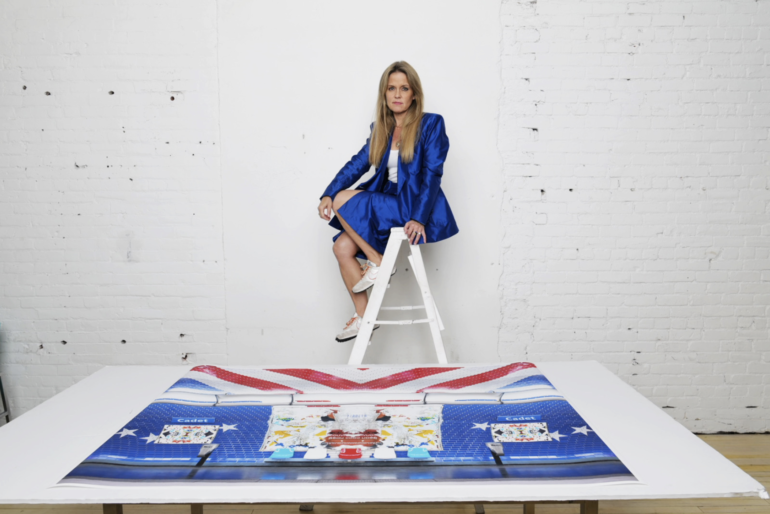Laurie Victor Kay is a multi-disciplinary artist living and working in Omaha, Nebraska and creating artwork with a universal message about the experience of being a woman, living with chronic pain, and confronting society’s obsession with youth and perfection.
Kay’s oeuvre blurs the lines between photography, painting, installation and digital mediums, ranging from photographic series that reimagine and abstract the everyday to autobiographical mixed-media work examining the psyche, vulnerability and contemporary culture.

Laurie Victor Kay (b. 1971) studied painting at the School of the Art Institute of Chicago and photography at Columbia College Chicago (BFA, 1995). Her work is featured in installations at UNMC’s Lauritzen Outpatient Center and Fred & Pamela Buffett Cancer Center, the Women’s Center for Advancement, May River Capital in Chicago, 4 World Trade Center in New York, Marriott Capitol Arts District, and Tenaska. She has exhibited throughout the United States and Europe, and her work is held in numerous private collections around the country. Kay is a current member of the Healing Arts Advisory Board for the University of Nebraska Medical Center.
Culturalee spoke to Laurie Victor Kay about her new projects ‘Pathos’ and ‘Apothecary’, using the camera lens as an autobiographical tool to document personal experiences, and the cathartic process of image-making.
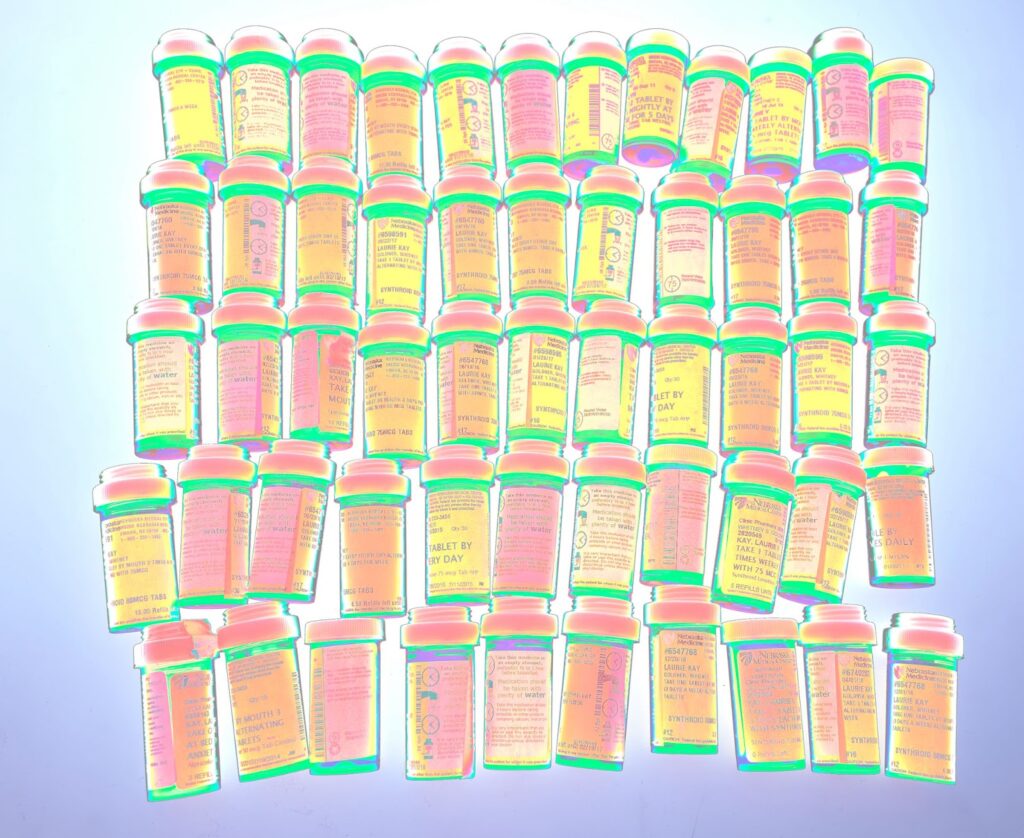
You are a mixed-media artist using photography, collage, writing and video. How would you describe your artistic practice, and how do you decide what mediums to use for each project, and how to combine them to get the result you want?
The mediums find me. The process is often so intuitive, I don’t even think about it. Sometimes it happens before I have even really conceptualized.
The work I’m creating right now starts with an idea or experience, a color, a feeling. In the past, I would have said that much of my work started with a singular photographic image. The images I capture in-camera are instrumental in my process. I’ve also found such potency in the power of words, especially the ones I’ve written by hand in journals. Video has become a powerful tool for me to capture the emotion I’m feeling in more abstract ways. The collages are my ways of piecing together new worlds. I see all these processes like a color wheel. Scribbled drawings balanced by symmetrical collages or grainy blurred images are balanced by clear text. My work is about contrasts.
In your new projects ‘Pathos’ and ‘Apothecary’, you use the camera lens as an autobiographical tool to document very personal feelings. Can you give an overview of the two projects and what the starting point was for them?
The Apothecary series actually began in 2012 with still lifes of handbags, French face creams and scribbled writing. At the time, I was almost 40 years old and had started deeply questioning the standards women are held to and the deeper meaning of everyday objects.
In the spring of 2023, Pathos and Apothecary came together during one of the most creatively productive time periods I can remember. I was very depressed. I wasn’t sleeping. I was having panic attacks often and my brain fog was terrible. I had been through quite extreme issues with both of my hands the year prior in 2022, which coincided with two major hand surgeries that involved bone removal and new joints in each thumb. I felt lost or maybe it was that I felt a loss: a loss of self and not long after the loss of my mother to cancer. I was experiencing pain on so many levels, I suppose it gave me a very unique perspective and urgency to create.
I decided to take up space in my studio in some different ways, like creating larger sets with backdrops for pill bottles I’d been collecting for years. And then there was also the rediscovery of the 4×5 camera, a longtime favorite that had been buried away on shelves. It was the ground glass of the camera that spoke to me. The grids and lines as structures spoke to me the same way the tiny white Xanax pills and their orange bottles felt so personal.
I was ready to be vulnerable with these two series. I dove in and let the process take over.
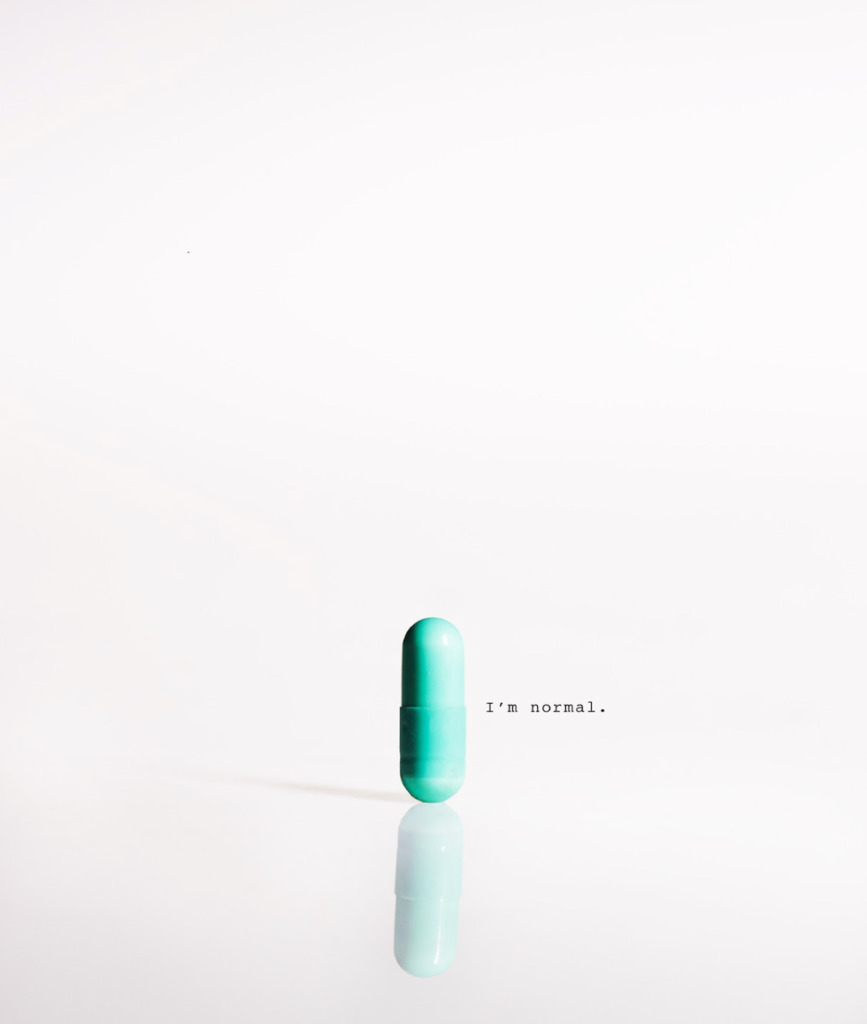
In your Apothecary series the series of artwork examine feelings of anxiety, inadequacy and body image with words such as ‘Liar’, ‘inadequate’ and ‘I feel normal’. And there is one image depicting a tube of cream with the sentence “bought at a french pharmacy. It was supposed to work. I still see those lines. Remnants.’ Would you say these images of anxiety and inadequacy are an examination of the pressure women feel in today’s society to look perfect and not age? And do you think social media and photoshopped images in magazines are partly responsible for this pressure?
Absolutely. As a photographer creating commissioned portrait work and commercial work, I too felt conflicted about how we always retouched women more than men. How the wrinkles somehow look more beautiful when softened or eliminated. What is this all about? Why the genderization? I see it in photos of myself as well. The retouching is supposed to bring confidence…or does it?
I’ve been in the industry for quite some time. Now that faces can literally be altered in seconds by an app or by AI, it makes me wonder even further. A “real” photograph is hard to find. How much further are we as a society going to take this? When my daughter was younger, I saw this as well. I was acutely aware of all of this artifice, the demands on women to be younger, prettier, nicer, etc. When are we going to really be real?
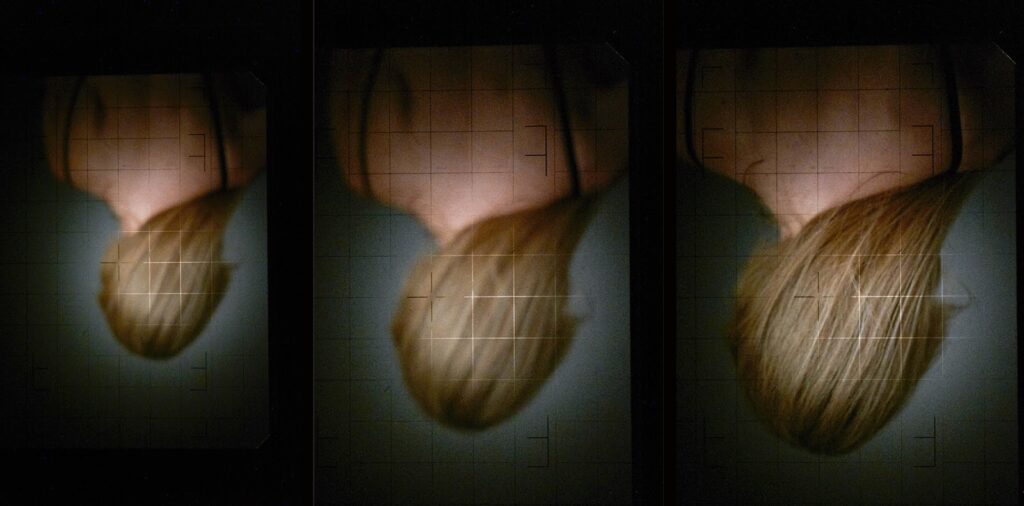
You studied painting at the School of the Art Institute of Chicago and took a BFA in photography at Columbia College Chicago. What made you want to combine those disciplines, and can you remember the first project you created that merge painting with photography?
My love of color and the ways I find a sort of sense-making with it is where this all begins. I’ve been experimenting with drawing on top of my archival pigment ink photographs for over ten years. I’d make maquettes of test prints with paint and drawings. The merge of what felt like painting began for me years ago when I brought my printing to my studio. I started pushing the color scope in painterly ways. The works I’ve created in my Kaleidoscope series, for instance, though they are often described as photographs, have always felt like a mix of painting when I’m creating them. There are layers and techniques I use much closer to painting in my mind.
Apothecary is the first series in which I’ve truly combined the mediums in a way that I feel conceptually takes the work to another level. The works include photographed pills and pill bottles. In my work Butterfly Blues with Xanax, I incorporated photography, digital drawing, and composite collage to create a large-scale print. Then I began writing very small graphite words in many languages and ways to create the spines of the butterflies and more subconscious thoughts. After the drawing I chose to use YInMn Blue, one of the most recent blue pigments discovered by an Oregonian chemist. The story fascinated me as much as my love of blue. I need more time in the studio to make these works. The time they take is a testament to the strength of the human spirit to change. The pills are like a code representing this change.
Your work is displayed in UNMC’s Lauritzen Outpatient Center and Fred & Pamela Buffett Cancer Center and the Women’s Center for Advancement, and you’re a member of the Healing Arts Advisory Board for the University of Nebraska Medical Center. And you will be giving a lecture at the University of Nebraska called ‘Artist Hands as Instrument’ which will explore your struggle to make work despite chronic pain after two major hand surgeries. Do you think art has the power to heal, or at least to provoke healing thoughts? And do you find the image-making process cathartic when you are investigating issues concerning the mind and body?
I am absolutely certain that art has the power to heal. There is now data backing this up, and it is incredible. I’ll be pushing this concept as far as I can in the future. I want to bring art to people that might not be able to access it, something my late mother was known for.
Gratitude Project, a 3-D projection mapped project that I conceptualized, produced, directed, and created during the pandemic, was one of my major projects focused on this concept. These animated images were messages of thanks and gratitude to Nebraska Medicine and UNMC healthcare professionals who were saving lives.
And now, as you mentioned, I will be speaking this November at “Artist Hands as Instrument” at the University of Nebraska Medical Center. I’ll be discussing my artistic process through the lens of having two major hand surgeries in late 2022, sharing about art-making through chronic pain and the power of healing through art as it relates to me personally and to the public at-large.
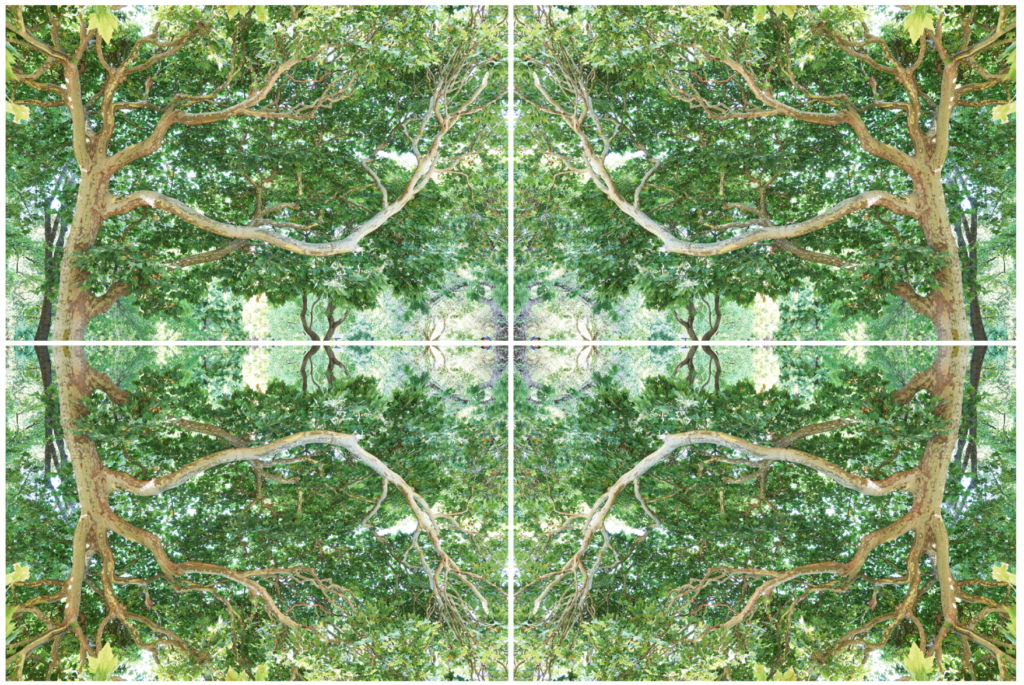
What projects and exhibitions do you have coming up that you can talk about?
The fall of 2024 is a busy one for me. I will be in New York City to photograph the incredible artist Ron Norsworthy for his upcoming show. In addition, I’ll be creating new works for various collections. The Tree works seem to be calling people to my work right now (trees are also so healing).
SCAD will be bringing me to Savannah to guest lecture and teach for their Fine Arts Showcase. I am so excited to bring my experiences, work, and intersections of art, photography, business, and brand to the students. I love the way SCAD focuses on collaboration. I look forward to seeing what students are creating and to also share ideas.
I will have two large-scale works featured as part of the Bemis Art Auction in Omaha. The Bemis has a residency program that attracts global artists to its highly selective roster. As a community member, I’m lucky to meet the residents that come and go.
The most exciting event is the launch of my new website lvkatelier.com, the relaunch of laurievictorkay.com and my new studio space LVK Atelier, which I’ve been in the process of creating for many months. My dream is coming to life in real time. One of the first things I purchased when I moved into this space, formerly my late mother’s home, was Klein Blue paint. It was a symbolic gesture as an homage to Yves Klein. I want to make my atelier a space where other artists and creatives can come visit, exchange ideas, and be brave like I was when I moved here. I have a giant tree coming right through my patio which is high in the sky. The boldness of this, the reminder of nature’s presence, and the idea of change excites me. I want LVK Atelier to be a space that blurs the lines of work and home. It is a way of thinking, a sense of liberté, Paris in Omaha!
Do you have any advice for young artists, especially young women wanting to become artists?
Trust your instinct. Surround yourself with people that make you feel like a better version of yourself, even if that is one or two people. Be curious. Be patient. Don’t give up. Try not to compare yourself. Your work is about you. So keep growing.


